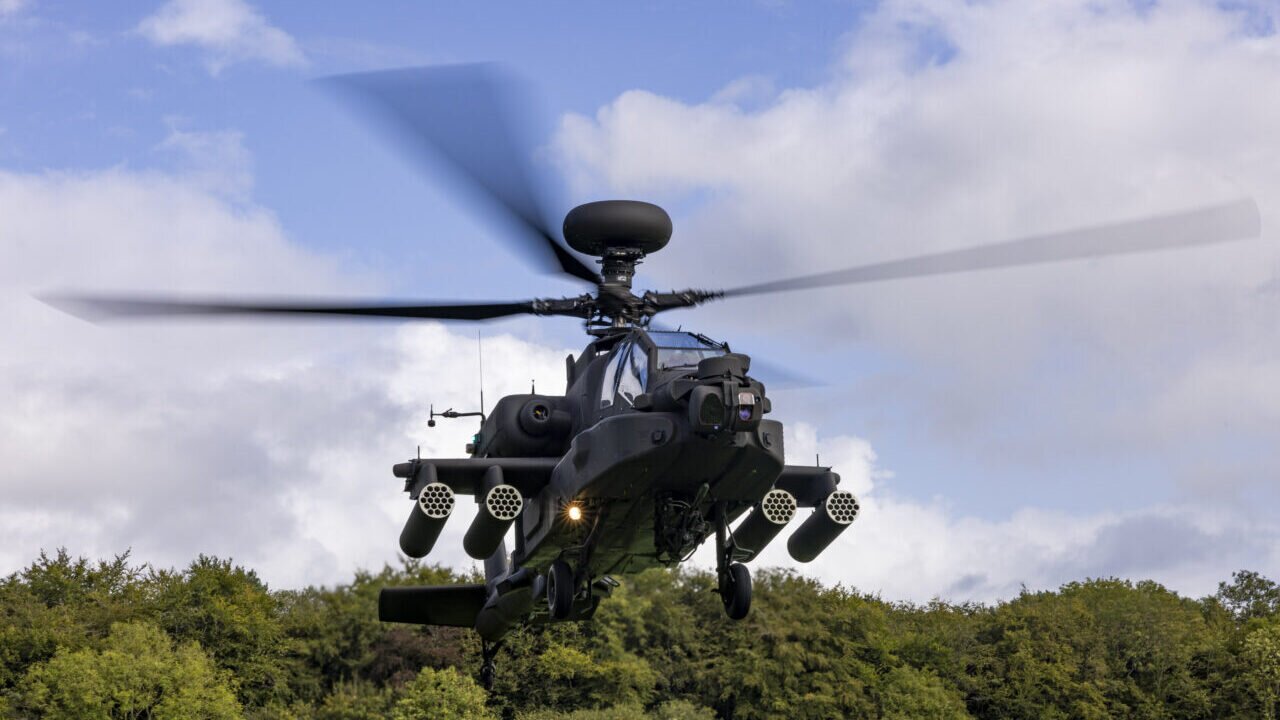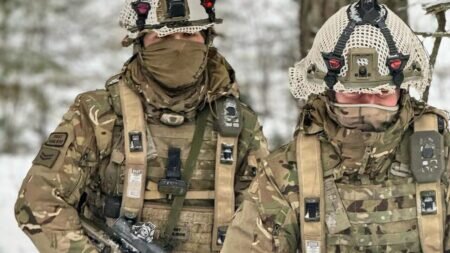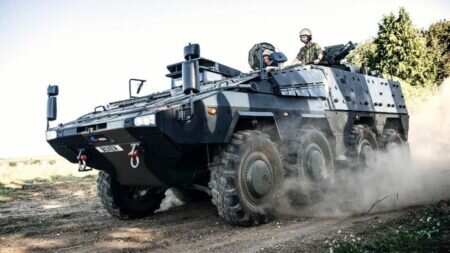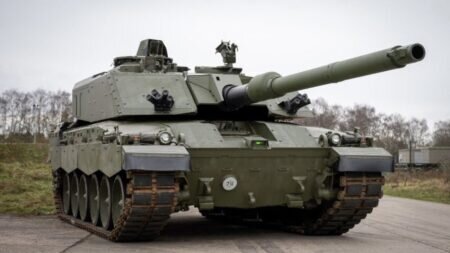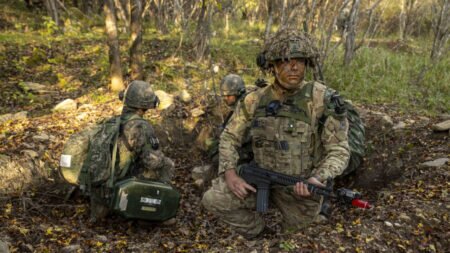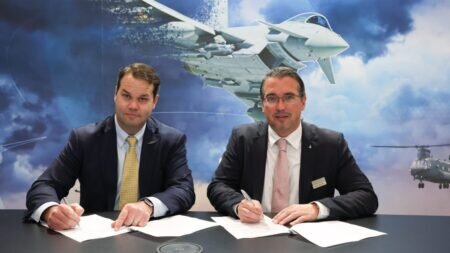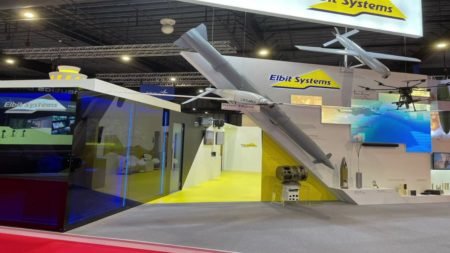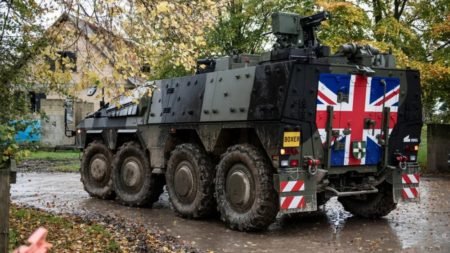The first regiment flying the British Army’s new Apache AH-64E attack helicopter has been declared ready for frontline duty.
3 Regiment Army Air Corps (3 Regt AAC) has been put through its paces on Exercise Iron Titan, testing every aspect of the unit from its logistics and command and control procedures to the maintenance and operation of the state-of-the-art AH-64E in the field.
The exercise saw 3 Regt AAC validated in its core role providing an aviation deep attack battlegroup, made up of AH-64Es and the Wildcat reconnaissance helicopters of 1 Regiment Army Air Corps, to 3rd (UK) Division, the British Army’s warfighting division. In this role, the AH-64E is a key element of how the Army will fight in the coming decades as set out in the Future Soldier transformation programme.
Across six weeks, 3 Regt AAC has deployed from its base at Wattisham Flying Station in Suffolk to set up temporary facilities at Nesscliffe in Shropshire, and then moved down to Eaglescott and Chivenor in Devon. Strike missions by the AH-64Es were planned and executed on simulated enemy positions as far apart as Otterburn in Northumberland and Lydd in Kent.
Throughout the exercise, Royal Electrical and Mechanical Engineers (REME) technicians kept the aircraft in working order, while ground crew ran isolated Forward Arming and Refuelling Points - the military equivalent of a Formula 1 pit stop - to keep the aircraft’s fuel tanks and weapons pylons full.
3 Regt AAC’s Commanding Officer Lieutenant Colonel Rich Simcock said: “The AH-64E is the most advanced attack helicopter in the world and the step change it brings in lethality, agility, survivability and how it can communicate and integrate with other capabilities is nothing short of revolutionary.
“To achieve validation, every single function that we deliver as a Regiment has been tested in a realistic scenario that reflects the challenges of modern operations. We have shown how we can sustain ourselves and survive on the battlefield, while striking targets far behind enemy lines to give ground troops a decisive advantage.”
The AH-64E entered service in 2021 to replace the Apache Mk. 1, which had proved itself as a battle winning asset on Afghanistan and Libya. The Boeing-built AH-64E features new drivetrain and rotor blades to boost flying performance; improved sights and sensors; communications systems to share data with other helicopters, uncrewed aircraft systems and ground forces; and embedded maintenance diagnostic systems to increase aircraft availability.
Lt Col Simcock said: “Like any machine, the AH-64E is only as good as the people who operate it. To have got to where we are just two years after the first aircraft arrived in the UK reflects the hard work and dedication put in by everyone in the regiment.
“Aircrew and engineers have been on training courses, we’ve developed new procedures to reflect the AH-64E’s enhanced capabilities, and we are constantly adapting as we learn more about what the aircraft can do.”
Exercise Iron Titan tested the ability of enablers and sustainment units – such as engineers, signallers, and logistics – to deliver combat units to the right place at the right time and in the right condition to win the battle. The manoeuvres involve some 8,000 troops working out of 22 locations across the South West, West Midlands and Wales.
📌The first regiment flying the @BritishArmy’s new Apache AH-64E attack helicopter has been declared ready for frontline duty.
🔗https://t.co/oxQ8iUl6Eq pic.twitter.com/iQyG5bxUSH— Defensehere (@defensehere_en) October 23, 2023

